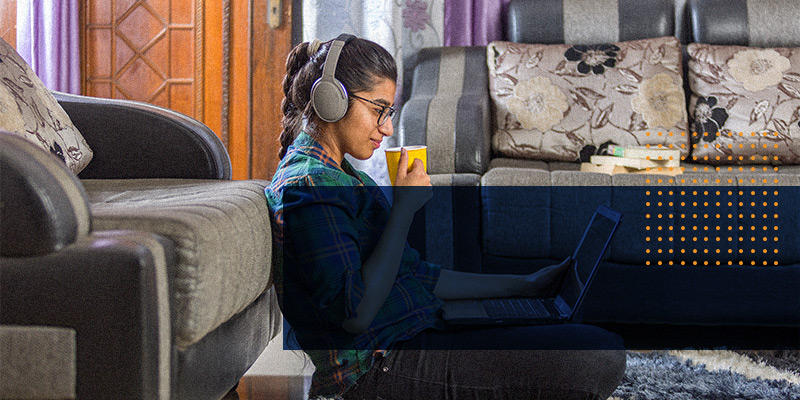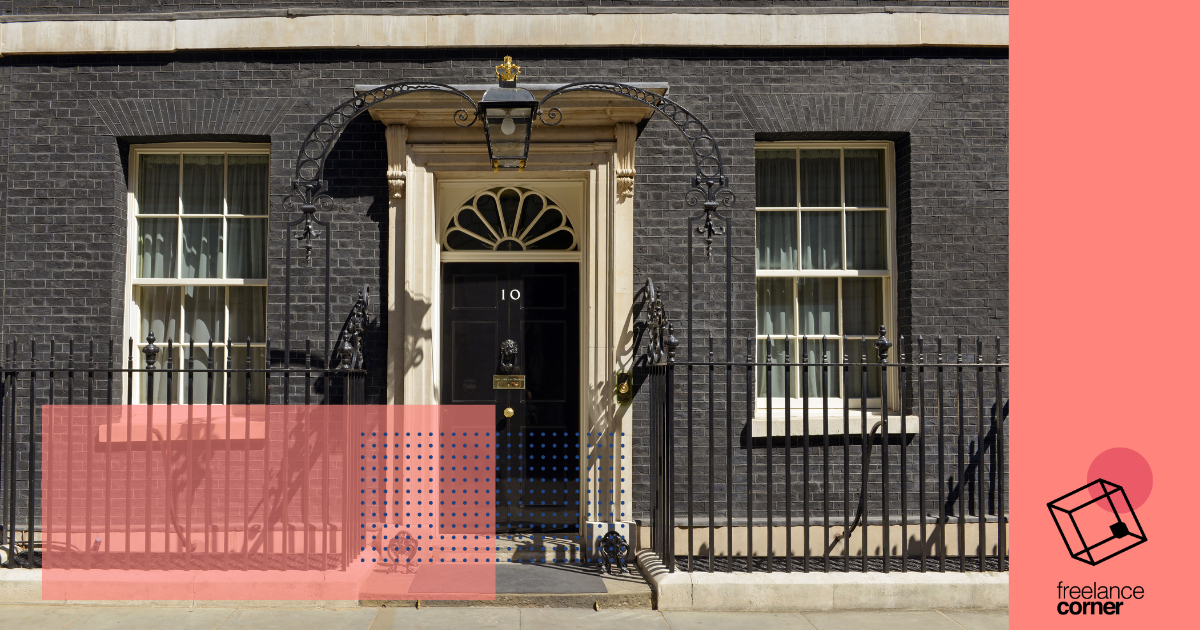Are you visually creative, and tempted to work remotely for yourself? Then you might be looking to become a freelance web designer. And it’s an attractive option if you’re thinking about getting started with a full or part-time self-employed career. But while there are few barriers to entry, it’s tougher to build a worthwhile income with so much competition for work.
Many people are tempted to skip research and planning to dive straight into a new career working for themselves. But while it’s understandable you’re excited about your new web design business, getting the right information early in the process can save you time and money. And it can also increase your chances of success.
If you want to expand your creative career into working across printed publications, on products and packaging, or across advertising, then why not also check out our guide on how to become a graphic designer?
Contents:
- Why become a freelance web designer?
- What skills and equipment will help?
- How much do freelance web designers earn?
- How to start as a freelance web designer?
- Finding new design clients as a freelancer?
- Important legal documents for freelance web designers
- Useful resources for freelance web designers
Why become a freelance web designer?
An interest or passion for design is obviously a key reason for many freelancers. And as with freelance writing or virtual assistants, there are no real barriers to entry. All you really need is a computer, and an internet connection.
If you have design experience or qualifications, switching to a self-employed career has a number of attractions. It means you can be more flexible about your working hours, and choose your own working environment, or the tools and software you want to use.
It’s also a great option for anyone looking to trial freelancing part-time around an existing day job, or to offer it as a side-hustle to supplement your income.
But probably the biggest reason is the potential to choose your work and clients. You may want to specialise in a particular industry, or focus on one specific area of web design. This can be an advantage over other freelances, if you can build a reputation as the expert for that particular subject.
Alternatively, it may allow you to utilise other skills, as delivering a website can include graphic design, user experience, interface design, search engine optimisation, content creation and more. If you’re a designer who also loves to write, code, or any other interest, then you can combine it in your freelance business, or run it alongside your design work.
And finally, it can also mean you have the ability to turn down clients which aren’t suitable for any reason. Being able to say no to work you’re uncomfortable with, or projects which will cause headaches, is a big part of being your own boss.

What skills and equipment will help?
With any freelance business, there are certain skills which will help you get the best results from your effort. You might love the creative side of design, but it’s important to spend some time working on your business plan.
Important skills for any creative freelancer include good, clear communication. Whether you’re meeting clients in person, or working entirely remotely, the sooner you can get a good understanding of what they want, and distil that into a brief everyone agrees with, the better chance you have to delivering a successful project.
Some understanding or talent for project management and an eye for detail are also valuable. As a web designer, you’ll probably be working with a developer to make your vision become a reality. And missing even the smallest requirements can lead to costly revisions, which damages your relationship with the client, as well as potentially costing you time and money.
Training and qualifications can be useful, but your skillset and portfolio will outweigh a course you took 10 years ago. Web design is constantly changing, so it’s important to look at courses and skills based on current trends if you want to tap into current demands.
Investing in a comfortable home office will make freelancing more enjoyable, and could make you more productive. But for your clients, your knowledge of common design software such as Photoshop will be important. If you’re on a tight budget, free options such as Gimp can provide the same functionality and quality. But the key is to make sure you’re able to share your work in a format that clients can easily access.
Along with knowledge of current design trends, you should ideally have at least a basic understanding of HTML, CSS and the most popular website software. You might not be coding the site yourself, but it means you’ll know what’s possible for a developer to achieve with WordPress, Shopify, SquareSpace or Wix.
How much do freelance web designers earn?
The amount you can earn from freelance web design can vary a lot. The rates for an experienced designer with in-demand skills will be vastly higher than anyone competing on price via a freelancer marketplace.
Glassdoor estimate an average UK salary for freelance web designers around £28,395, while Indeed suggests around £27,120. But it’s possible to earn much more, or less, depending on the rates you set, and how you charge for projects. (Freelance Corner members can access a guide on How to set your freelance rates, here)
This is where your business plan will be useful, as it should include your business and personal expenses, how many billable hours you can offer, and what you need to charge to make a profit. Keep in mind that you’ll also need time for business administration, finding clients, staying up with design trends and possibly training, so not all of your working week will be chargeable to clients.
It’s also worth factoring in supplemental income that may be achievable by offering your own training courses, design resources such as font and icon packs, or website themes and templates. This has the benefit of offering a relatively passive income alongside your client work once sales start to take off.
You will also be responsible for setting payment terms, issuing invoices and chasing late payments. Many designers will insist on a partial deposit before starting work to minimise future issues, and then bill the remainder on agreed project milestones, or upon completion.

How to start as a freelance web designer?
There’s no guaranteed way to become a successful web designer. And plenty of people have been able to build great freelance careers despite ignoring good advice. But most creatives would agree that you should start building up a portfolio as soon as possible.
If you’re just starting out, then you probably won’t have any existing clients, and you might not be legally able to share work from any previous employer. But you can create a good and varied portfolio by designing templates and themes, mockups, logos and more. These can be shared on your own website, or design networks like Behance and Dribbble.
Many veteran freelancers will suggest you should never provide client work for free to gain experience and exposure. The concern is that it undervalues your efforts, and web design as an industry, as well as potentially taking a paid project out of the market. But one option is to offer your services to a non-commercial organisation, such as a small local charity, which wouldn’t have the resource to hire a more experienced designer.
If you do choose to offer free or cut-price work to friends, family, or anyone else, make sure you treat it as seriously as any fully paid project. Clear briefs, contracts, payment terms, deliverables and deadlines are potentially even more important to prevent disagreements with parents and relatives, as unlike clients, you’ll definitely be stuck with them long after the project has been completed.
Finding new design clients as a freelancer?
Some web designers are talented and lucky enough to be spotted via their portfolio. But most will need to do some work to attract new clients, especially in the early stages of freelancing.
Setting up your own website, and sharing your work on design networks is a good start. But don’t overlook more traditional methods of finding work. Local business meetups and social events for freelancers can be valuable in finding both clients and collaborators. And if you want to specialise in a particular area, why not research websites which need issues fixed or a design overhaul, and contact the relevant company?
Social networks are also a great way to make contacts within the industry and freelancing in general, as well as potentially showcasing you to new clients. Alongside maintaining any profiles, it’s worth looking for relevant groups to join (you could start with our own Creative Freelancers UK Facebook group).
As you build up your knowledge and experience, more options will become available. These can include writing articles about design for your own website, or as guest posts for other publications. Or volunteering to be interviewed on podcasts or videos about design and freelancing to start getting more name recognition.
One key area many freelancers overlook is the onboarding process for new clients. Once you’ve got initial interest, it’s important to turn that into an agreed project as smoothly as possible. So having a clear workflow for securing good clients (and filtering out bad ones) will save you time and money.

Important legal documents for freelance web designers
Contracts and legal agreements are important for any freelancer. You can find useful templates and resources via membership of Freelance Corner or IPSE.
- Contract: These provide clear guidance and protection to both parties by giving a concise definition of the project, tasks and responsibilities involved, payment, copyright, and what happens if the work is cancelled or terminated early.
- Terms and Conditions: It can be useful to have a more in-depth document outlining your standard practices. This helps future clients know what they can expect before contacting you.
- Copyright agreement: This is particularly key for creative freelancers, as you want to ensure your work isn’t stolen, miscredited, or re-used outside of the original agreement without further discussion or payment. Copyright law can vary a lot between different countries, especially if you’re working with overseas clients, so it’s a good idea to get specialist advice where possible.
Useful resources for freelance web designers
- Freelance Corner – our site filled with advice on all aspects of starting your freelance career and finding more success, along with resources, tools and practical benefits for members. Including a range of freelance guides including getting work and being paid, here.
- IPSE – the UK’s only not-for-profit association dedicated to the self-employed.
- Creative Freelancers UK – our Facebook group to network with other novice and experienced self-employed business people.
- Behance and Dribbble – useful design-focused networks for sharing your work.
Researching other freelance careers? Why not check out our other guides:
- How to become a freelance SEO consultant
- How to become a freelance writer
- How to become a freelance Virtual Assistant (VA)
- How to become a freelance structural engineer
- How to become a freelance photographer
- How to become a freelance business analyst
- How to become a freelance event planner or organiser
- How to become a freelance coach
- How to become a freelance proofreader
- How to become a freelance bookkeeper
- How to become a freelance content creator
- How to become a freelance illustrator
- How to become a freelance photojournalist
- How to become a freelance hair stylist
- How to become a freelance recruiter
- How to become a freelance translator
- How to become a freelance editor
- How to become a freelance music producer
- How to become a freelance WordPress developer
- How to become an author
- How to become a freelance tutor
- How to become an author
- How to become a freelance tutor
- How to become a freelance makeup artist
- How to become a freelance photo editor
- How to become a freelance model
- How to become a freelance animator
- How to become a freelance digital marketer
- How to become a freelance network engineer
- How to become a freelance chef
- How to become a freelance fundraiser
- How to become a freelance data scientist
- How to become a freelance graphic designer
- How to become a freelance accountant or financial consultant
- How to become a freelance interior designer
- How to become a freelance personal trainer
- How to become a freelance HR consultant
- How to become a freelance filmmaker
- How to become a freelance transcriptionist
- How to become a freelance game developer
- How to become a freelance first aid trainer
- How to become a freelance video editor
- How to become a freelance project manager
- How to become a freelance musician
- How to become a freelance massage therapist
- How to become a freelance social media manager
- How to become a freelance 3D artist or modeller
- How to become a freelance AI prompt engineer
- How to become a freelance dog groomer
- How to become a freelance location scout
And you can get support and help if you’re starting out with self-employment, or still in the early stages of building your career, with the IPSE Incubator. The 12-month programme is currently free with IPSE membership, and includes advice, events, webinars, networking and more, tailored to anyone just beginning their freelance business.






